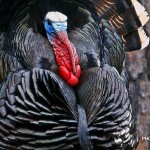Designing Mouth Calls
 I have been making turkey calls for many years, and I have thrown many mouth calls away because they didn’t sound good. Learning from my mistakes is what made me a better call maker. There’s a few things I’d like share with you about making these mouth calls.
I have been making turkey calls for many years, and I have thrown many mouth calls away because they didn’t sound good. Learning from my mistakes is what made me a better call maker. There’s a few things I’d like share with you about making these mouth calls.
First, thicker reeds take more air to call on and create a lower pitch. Thinner reeds take less air to vibrate and are higher in pitch.
When it comes to the number of reeds in a call, more reeds equals more air to vibrate – conversely, fewer reeds equals less air. Different combinations serve different purposes; for instance, if I want a call I can make soft yelps on, I go with a lower number of reeds – and thinner, too. If I want a call that I can make loud cuts on, I’ll go with more, thicker reeds.
Next, side tension will vary the pitch in any mouth call. Lesser side tension results in a lower pitched call. If you stretch a call too tight, it will be hard to blow and too high in pitch. If you stretch a call too lose, it will not be tight enough to vibrate or will sound very low in pitch. The side tension scale I provide should keep you in the pitch of a turkey but every combination is different and so is every caller. You will have to experiment a little before finding the best design for you.
The combination of the mouth call design determines back pitch composition, but as a general rule you want the back tension to match the side tension. If you have a lot of side tension, then you want more back tension – and the same is true if you’re looking for less side tension. Keep in mind, everybody calls a little different according to the shape of their mouth and tongue – if your buddy sounds great on one particular mouth call, it doesn’t mean that same call is good for you!
My favorite call is one I can do it all on: A 2.5 reed call with medium side tension and a ghost cut in it. I call it the Sweet Sassy Hen. It has .004” latex for the top reed, and .003” latex as the bottom two. I like to have a little thicker latex for the top reed because before I call on it, I pull on the top reed to separate it from the bottom reeds. Thicker latex does not tear as easy. I recommend the total thickness of all reeds not exceed thirteen thousandths of an inch thick [.013”], or else it will be harder to call on. The Sweet Sassy Hen is a total of ten thousandths of an inch thick, for the record.
Thanks for taking the time to learn more of how I approach making these custom mouth calls – make sure to stop over in the shop and see if one strikes your fancy, or see each of them in action on our videos page!
Thanks for your business!
